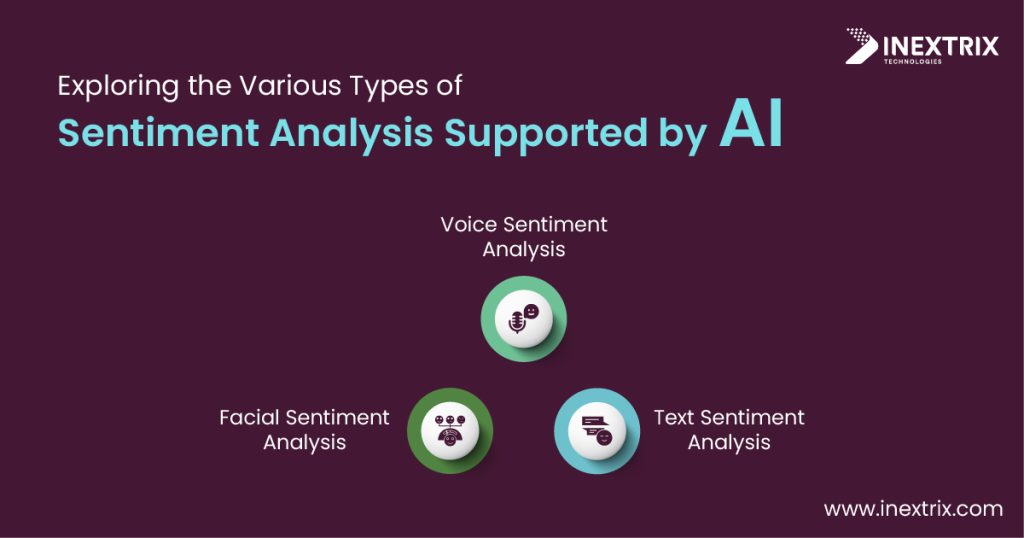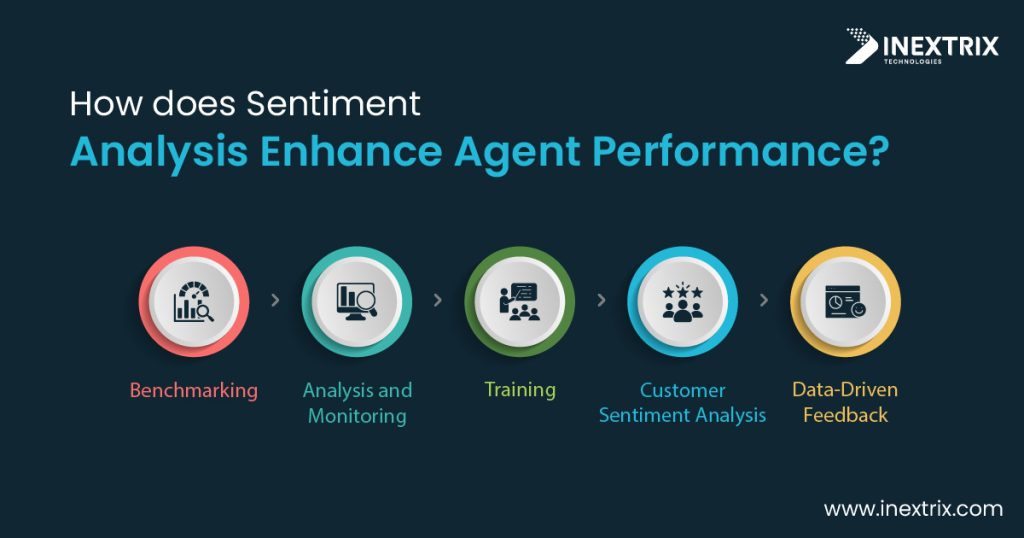Agent performance is one of the most vital factors defining the success of a call center and its campaigns. Therefore, a majority of call centers focus on acquiring the best call center solutions, which can help agents perform optimally and productively. Certainly, automation has been one of the advantageous inventions of these solutions. Automation has helped agents to get rid of monotonous and repetitive jobs to focus solely on their jobs, give them a morale boost and sharpen their skills.
Certainly, the skills of agents keep getting polished with time. However, there are still some jobs that are solely dependent on the senses of agents. For example, understanding the sentiments of customers was a challenging job and also highly dependent on the intellectual skills of agents. Unfortunately, there was no way to gauge whether agents were doing the right job or not. Moreover, there was no tool to help agents identify the right sentiments of customers and personalize their way of conducting calls accordingly to increase success. However, technological advancements never stop.
Boost your customer service efficiency with our comprehensive Call Center Solutions.
Interestingly, science and technology could have come together in the form of AI and that could have identified this major challenge faced by call centers. As a result, the invention of sentiment analysis took place in the artificial intelligence (AI) industry. This invention is in the mature phase and therefore, several solutions have already been integrated to empower agents with the power of identifying the emotions of customers. It is beneficial for all communication solutions, even for smart solutions like smart telephony platforms.
In this blog post, we are going to delve deeper to understand more about sentiment analysis. Moreover, we will cover some other interesting facts that can help your call centers solutions to boost the performance of agents.
1. What is a Call Center System?
It is a software solution that is used in a call center and empowered with powerful technology tools and features. Certainly, this solution provides a range of features that are built to make the job of agents easier. Moreover, these solutions support managers in tracking the performance of different campaigns and agents. As a result, they can provide the required coaching to agents. This would further improve the performance of the agents.
Undoubtedly, a VoIP call center solutions with a range of features to support inbound, outbound, and blended campaigns is popular among consumers. However, with increasing use and shifting demand, technology companies are now inventing different types of solutions. Moreover, inventions to meet different requirements of the call center solutions are also considered. As a result, we are getting more interesting features and powerful functionalities in this software.
2. What is Sentiment Analysis?

Simply put, it is an AI driven process that analyzes nonverbal signs to detect the correct emotions of the human while speaking or even not speaking. Besides detection, AI can also assign labels to those emotions to simplify them for agents. For example, emotions are labeled as positive, negative, and neutral. This process is also known as opinion mining.
Unquestionably, this technique finds numerous applications in the call center industry. Particularly, it is very useful in understanding customer sentiments, interactions, and preferences. For instance, call centers utilize sentiment analysis to monitor the opinion of their customer services and to enhance customer experience.
According to Markets and Markets Research, the market of sentiment analysis was estimated at $23.5 Billion in 2022. Moreover, by 2027, it is estimated to reach $ 42.9 Billion. It predicts a 12.8% CAGR for the forecast period.
Sentiment analysis provides an overall sentiment score for your contact center. Moreover, it integrates additional contact center Workforce Optimization (WFO) suite KPIs. This correlation allows you to identify trends, previously unnoticed, by linking sentiment with metrics like call duration, hold time, silence, evaluation score, and Net Promoter Score (NPS). As a result, you can work on optimizing strategies and improving results. Additionally, you can also increase the performance of your agents.
3. What are the Supported Types of Sentiment Analysis in AI?

AI is very much advanced in the sentiment analysis segment. Therefore, multiple areas in this segment help agents to identify the emotions of customers. Three very popular sentiment analysis types are implemented into the software nowadays, which are briefly explained hereunder:
3.1 Facial Sentiment Analysis
Nowadays, the implementation of unified communication in call centers has become a norm. Call centers use a variety of communication channels to connect with clients and take a step ahead to delight them. Certainly, video calling is one of the important modes of communication in the call center industry and it helps in generating more value. Therefore, the sentiment analysis brand has added facial sentiment analysis as a major branch.
As the name suggests, it detects sentiments on the face. To do so, it analyzes nonverbal signs and expressions on the face of the client during the live video call with an agent.
3.2 Voice Sentiment Analysis
Certainly, it is one of the most important sentiment analysis algorithms. As the name suggests, it detects negative, positive, and neutral sentiments in the voice of the customer. Definitely, it also evaluates nonverbal signs to judge how positive, negative, or neutral a customer is. Moreover, it has nothing to do with what the customer is saying.
We recommend you read our blog post covering the benefits of chatbots in a call center solutions. Definitely, chatbot is one of the most popular AI tools in the call center solution industry and it is making a huge impact. As customer experience and agent performance are correlated, let’s review how they play a pivotal role in the success of a call center.
3.3 Text Sentiment Analysis
Definitely, nonverbal signs are important to detect the sentiments of a client. Likewise, words are also very crucial in defining the state of mind of the customer. Therefore, AI also provides a sentiment analysis tool to analyze and detect the sentiments in spoken words. To do so, it transcribes the customer’s conversation into the text and analyzes words to conclude whether the customer was happy, angry, or neutral during the conversation.
4. Utilities of Sentiment Analysis in a Call Center
We are discussing how call centers using sentiment analysis algorithms improve agent performance. However, that is not the only utility of having a solution with integrated sentiment analysis. Let’s look at some of the major utilities of these AI engines.
4.1 Automated Quality Assurance (QA)
Automated QA with sentiment analysis is possible with AI. It offers valuable insights into agent responsiveness, resolution rates, and customer effort scores. By correlating these metrics, call center managers gain deeper insights into the entire customer service journey and agent performance, too.
4.2 Assess Agent Performance
You can evaluate agent performance through individualized dashboards that track sentiment, call dispositions, and other key metrics. These dashboards provide a clear view of each agent’s strengths and areas for development. Moreover, it guides their training and skill enhancement.
4.3 Trends and Patterns
Sentiment analysis blended with call analytics can identify trends and correlations within customer interactions. For example, you can analyze whether calls related to a particular agent tend to elicit more frustration from customers. Similarly, several other trends and patterns are available to work on several areas, including, but not limited to agent performance.
5. Top Ways Sentiment Analysis Improves Agent Performance

In multiple ways, sentiment analysis integrated into call center solutions helps call center solutions improve agent performance. Let’s explore more about it in this section.
5.1 Benchmarking
Sentiment analysis uses KPIs and the overall performance of agents to define benchmarks. This benchmark can also consider industry standards based on the data analyzed using AI sentiment analysis algorithms. These benchmarks help in comparing and improving agent performance.
5.2 Analysis and Monitoring
Certainly, this is an important use of sentiment analysis. It measures the performance of all agents and ranks them. It can also create an individual performance dashboard showing the weaknesses and strengths of all agents. Additionally, it can review the sentiments of agents during calls covering tone, pitch, pace, use of words, and several other criteria. These tools define whether an agent is positive, negative, or neutral during the call.
We recommend you read our blog post covering the benefits of chatbots in a call center. Definitely, chatbot is one of the most popular AI tools in the call center industry and it is making a huge impact. As customer experience and agent performance are correlated, let’s review how they play a pivotal role in the success of a call center solutions.
5.3 Training
Depending on the results of analysis and monitoring, managers can define training sessions for agents. These sessions include group and one-to-one training for improvement. Additionally, it helps in creating rewards to improve agent performance even further.
5.4 Customer Sentiment Analysis
Undoubtedly, analyzing the sentiments of clients tells a lot to call centers and agents. Therefore, the solution must analyze client sentiments and provide that data to agents. Agents can review to identify patterns that trigger anger in clients or help in pacifying them. All these clues can help them perform better in future interactions with clients.
5.5 Data Driven Feedback
Strict or negative feedback is often depressing for agents. Often, they deny accepting that consciously or subconsciously. However, sentiment analysis tools provide data based on the performance of agents and it is not human extracted. Therefore, it is more reliable and acceptable for agents as there is no way it is biased.
6. How to Integrate Sentiment Analysis into a Call Center?
There are three ways to implement sentiment analysis in your call center and they are explained hereunder in brief.
6.1 Integrate AI Algorithms into the Software
Certainly, you don’t need to invest in research and development of AI algorithms for sentiment analysis. These algorithms are already available. These sentiment analysis tools not only detect and label the sentiments, but they also project them in pictorial ways to make it quite easier for you to understand. In short, you don’t need to invest a massive amount in developing these engines. Rather, you just need to find the right AI sentiment analysis algorithm providers and integrate those AI engines into your VoIP contact center solution.
You will need technical expertise for API integration. Moreover, you will need access to the source code of your software, so that you can integrate the APIs.
6.2 Buy a Solution that has in-built Sentiment Analysis Functionality
Possibly, the easiest option is to buy a solution for your call center that offers you features of the software for call centers. Additionally, it already has implemented AI algorithms for sentiment analysis and detection.
If you already have a solution, then it might not be a feasible option because buying new software is an added expense. Moreover, you will need to invest in migration as well. However, if you are going for a new venture and don’t have any tools and solutions, then this can be an ideal option for you.
6.3 Partner with a Technology Company to Integrate Sentiment Analysis into the Software
This is one of the most preferred options in which call centers partner with their own software provider or any other tech-savvy software company working in this industry. Generally, these companies already know the best AI sentiment analysis providers. Therefore, there is no need for scouting the right tool. Additionally, they will provide the required integration of sentiment analysis engines into your software for call centers. Unquestionably, this is the most ideal and cost efficient option.
Concluding Note
In conclusion, sentiment analysis has an important role to play in the call center industry. It can analyze the sentiments of customers and agents and provide data driven feedback. This information is useful in improving strategies, training sessions, benchmarking, and several other aspects that help in improving the individual and overall performance of call centers.
We have been adopting the top technology tools. Moreover, we provide the required consultancy and assistance to integrate the right AI and other technology tools within call center solutions to improve agent performance, customer satisfaction, and other KPIs. Contact us and discuss how our technical expertise can help in integrating sentiment analysis into your software.

